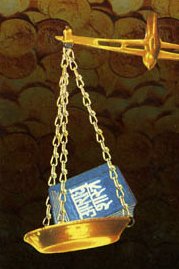Jatakarman, Jātakarman, Jata-karman: 12 definitions
Introduction:
Jatakarman means something in Hinduism, Sanskrit, the history of ancient India. If you want to know the exact meaning, history, etymology or English translation of this term then check out the descriptions on this page. Add your comment or reference to a book if you want to contribute to this summary article.
In Hinduism
Arthashastra (politics and welfare)
Source: Knowledge Traditions & Practices of India: Society State and Polity: A SurveyJātakarman (जातकर्मन्) refers to the “rituals at childbirth” and represents one of the sixteen saṃskāras, or “ceremonies” accompanying the individual during the Gṛhastha (householder) stage of the Āśrama way of life. These ceremonies (e.g., jātakarman-saṃskāra) are community affairs and at each ceremony relations and friends gather for community eating.

Arthashastra (अर्थशास्त्र, arthaśāstra) literature concerns itself with the teachings (shastra) of economic prosperity (artha) statecraft, politics and military tactics. The term arthashastra refers to both the name of these scientific teachings, as well as the name of a Sanskrit work included in such literature. This book was written (3rd century BCE) by by Kautilya, who flourished in the 4th century BCE.
Purana and Itihasa (epic history)
Source: archive.org: Shiva Purana - English TranslationJātakarman (जातकर्मन्) refers to “post-natal sacred rites”, according to the Śivapurāṇa 2.3.7.—Accordingly, after the Goddess (Umā/Śivā) incarnated as Pārvatī by becoming the daughter of Menā:—“[...] The lord of mountains rejoiced on seeing the child shining in dark splendour like that of the blue lotus. All the citizens there, both men and women, rejoiced much. There were great festivities. Different sorts of musical instruments were played. Auspicious songs were sung. The dancing girls exhibited their saltatorial skill. The lord of mountains performed post-natal sacred rites [i.e., jātakarma-vidha] and made charitable gifts to the Brahmins. [...]”.

The Purana (पुराण, purāṇas) refers to Sanskrit literature preserving ancient India’s vast cultural history, including historical legends, religious ceremonies, various arts and sciences. The eighteen mahapuranas total over 400,000 shlokas (metrical couplets) and date to at least several centuries BCE.
Kavya (poetry)
Source: Brill: Śaivism and the Tantric Traditions (kavya)Jātakarman (जातकर्मन्) refers to the “birth ritual”, according to Kālidāsa’s Raghuvaṃśa verse 3.18.—Accordingly: “When the complete birth ritual (jātakarman) was done by the ascetic chaplain who had come from the grove of ascetics, Dilīpa’s son shone yet more, like a precious stone taken from a mine and then polished”.

Kavya (काव्य, kavya) refers to Sanskrit poetry, a popular ancient Indian tradition of literature. There have been many Sanskrit poets over the ages, hailing from ancient India and beyond. This topic includes mahakavya, or ‘epic poetry’ and natya, or ‘dramatic poetry’.
India history and geography
Source: Cologne Digital Sanskrit Dictionaries: Indian Epigraphical GlossaryJāta-karman.—(EI 4), a ceremony performed at the birth of a child. Note: jāta-karman is defined in the “Indian epigraphical glossary” as it can be found on ancient inscriptions commonly written in Sanskrit, Prakrit or Dravidian languages.

The history of India traces the identification of countries, villages, towns and other regions of India, as well as mythology, zoology, royal dynasties, rulers, tribes, local festivities and traditions and regional languages. Ancient India enjoyed religious freedom and encourages the path of Dharma, a concept common to Buddhism, Hinduism, and Jainism.
Languages of India and abroad
Sanskrit dictionary
Source: DDSA: The practical Sanskrit-English dictionaryJātakarman (जातकर्मन्).—n. a ceremony performed at the birth of a child; Manusmṛti 2.27,29; R.3.18.
Jātakarman is a Sanskrit compound consisting of the terms jāta and karman (कर्मन्).
Source: Cologne Digital Sanskrit Dictionaries: Shabda-Sagara Sanskrit-English DictionaryJātakarman (जातकर्मन्).—n. (-rma) 1. A ceremony performed when the navel string is divided, touching the infant’s tongue thrice with ghee, with appropriate prayers, &c. 2. Delivery &c. of a newborn infant. E. jāta born, and karman rite.
Source: Cologne Digital Sanskrit Dictionaries: Benfey Sanskrit-English DictionaryJātakarman (जातकर्मन्).—n. the ceremony on the birth of a child, [Mānavadharmaśāstra] 27.
Jātakarman is a Sanskrit compound consisting of the terms jāta and karman (कर्मन्).
Source: Cologne Digital Sanskrit Dictionaries: Cappeller Sanskrit-English DictionaryJātakarman (जातकर्मन्).—[neuter] the ceremony after birth.
Source: Cologne Digital Sanskrit Dictionaries: Aufrecht Catalogus CatalogorumJātakarman (जातकर्मन्) as mentioned in Aufrecht’s Catalogus Catalogorum:—[dharma] from the Saṃskārabhāskara. Ak 360.
Source: Cologne Digital Sanskrit Dictionaries: Monier-Williams Sanskrit-English Dictionary1) Jātakarman (जातकर्मन्):—[=jāta-karman] [from jāta] n. a birth-ceremony (consisting in touching a newly-born child’s tongue thrice with ghee after appropriate prayers), [Śāṅkhāyana-gṛhya-sūtra; Gṛhyāsaṃgraha; Manu-smṛti ii, 27 and 29; Yājñavalkya i, 11; Mahābhārata] etc.
2) [v.s. ...] (cf, [Religious Thought and Life in India pp.353&357.])
[Sanskrit to German]
Sanskrit, also spelled संस्कृतम् (saṃskṛtam), is an ancient language of India commonly seen as the grandmother of the Indo-European language family (even English!). Closely allied with Prakrit and Pali, Sanskrit is more exhaustive in both grammar and terms and has the most extensive collection of literature in the world, greatly surpassing its sister-languages Greek and Latin.
See also (Relevant definitions)
Ends with: Apastambajatakarman.
Full-text: Jataka, Pragalbha, Jatakarmadisamskara, Bapanna bhatta, Samskara, Jata, Abhijata.
Relevant text
Search found 12 books and stories containing Jatakarman, Jātakarman, Jata-karman, Jāta-karman; (plurals include: Jatakarmans, Jātakarmans, karmans). You can also click to the full overview containing English textual excerpts. Below are direct links for the most relevant articles:
Puranic encyclopaedia (by Vettam Mani)
Sankhayana-grihya-sutra (by Hermann Oldenberg)
Manusmriti with the Commentary of Medhatithi (by Ganganatha Jha)
Verse 2.27 < [Section VIII - Duties and Sacraments]
Vedic influence on the Sun-worship in the Puranas (by Goswami Mitali)
Part 3 - The Saṃskāras, Referred to in the Purāṇas < [Chapter 5 - Rituals Related to the Sun-Worship in the Purāṇas]
Part 42 - Different Rituals and the Sun-Worship < [Chapter 2 - Salient Traits of the Solar Divinities in the Veda]
Gobhila-grihya-sutra (by Hermann Oldenberg)
Gautama Dharmasūtra (by Gautama)